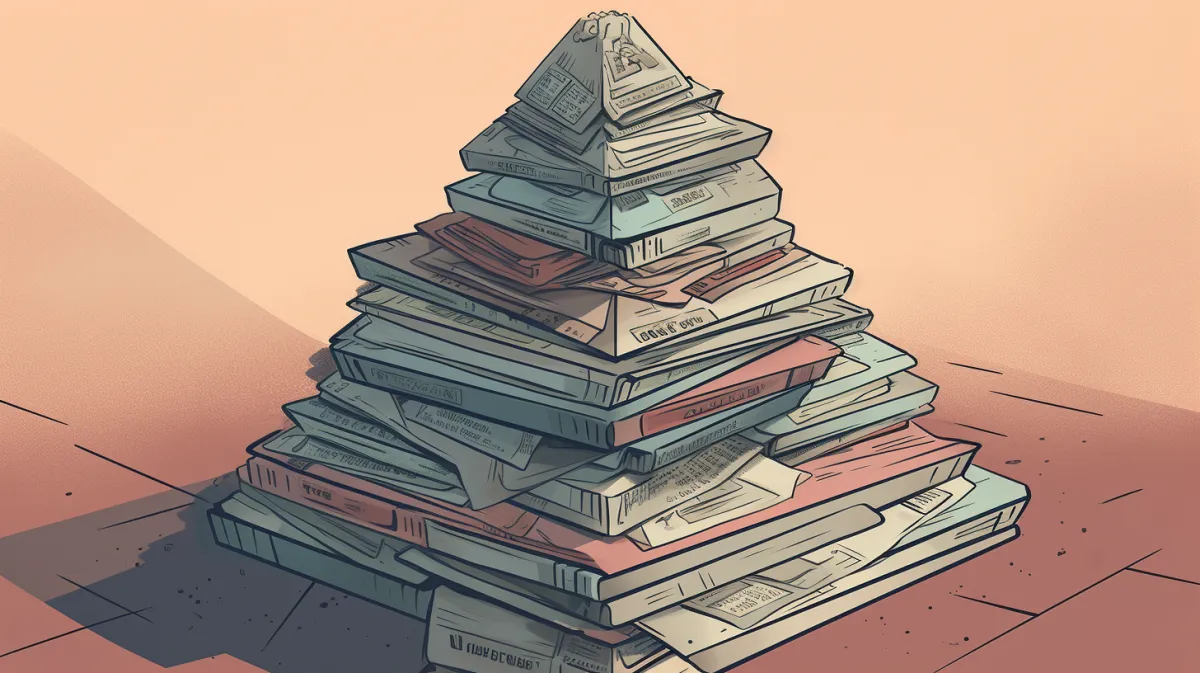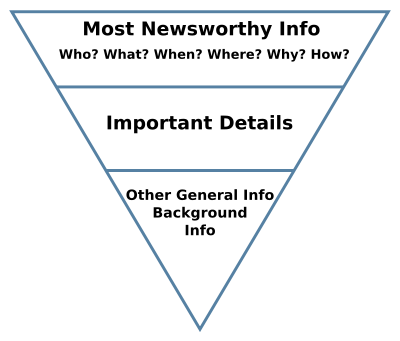Don't blame the pyramid, blame the pharaohs.
BBC Radio 4 have a new series starting this week aimed at "giving you the tools to decode the news." How to read the news" was a good listen. But it did rub against some things about journalism that I find quite frustrating.

BBC Radio 4 have a new series starting this week aimed at "giving you the tools to decode the news." How to read the news" is a series of 15-minute episodes that take a look at key aspects of the way news is made. It's a laudable aim and the first episode was a good listen. But it did rub against some things about journalism that I find quite frustrating.
The first ep 'Have you read paragraph 8', neatly used the scandal around CBI and its ex-boss Tony Danker to set up the problem of context in the news. In an interview, Danker noted that people assumed he was guilty of things that happened at the CBI but you had to get to paragraph 8 to understand that. 'No one reads to paragraph 8'. In other words, to get the nuance of the story you needed to look beyond the headline. But why don't people read that far?
Well, it turns out it's the fault of the Inverted Pyramid.
Journalists and journalism students alike will be familiar with the concept. You start with the most newsworthy element, usually the latest development and then introduce the context. It's nicely explained by Journalist and head of journalism at News Associates, Alice Gregory. They use the example of someone being hit by a tram to illustrate that it's not about chronological order, it's about the most important part. Man hit by tram. Not once upon a time in Manchester. The line I sometimes use with students is "Punchline first, then the joke"

The show does a good job of explaining the roots of the form (the development of the telegraph) and what that means for the way we structure a piece. But then it moves on to explore why that may be problematic in a world where not reading to paragraph 8 is the norm. Journalist and researcher Shirish Kulkarni, makes a strong case as to why it's not fit for purpose, arguing that there's a more innovative way of presenting a story that suits more modern consumption habits. And they are right.
But that's where the episode started to make my teeth itch.
I know my frustration comes from a more fundamental issue - I think the inverted pyramid is wrong. As a visual metaphor for the way we do journalism, it's the wrong way up. Any good piece of journalism should start with the point.
But that's beside the...erm...point.
Beyond my prejudices, I think the episode missed a trick by not making a distinction between basic reporting - something the pyramid is designed to assist and the kind of more in-depth investigative content it uses to frame the issues. The example that Gregory gives is bread-and-butter reporting. The CBI story is something a little different. To not make that distinction is a little unfair.
But my main criticism would be one that I would level at a lot of conversations journalists have about the process. We use the word story in a very uncritical way in journalism. We confuse the artefacts we create with the story we are telling and vice versa. In that context, I think it was a stretch to claim that the source of the problem with people engaging with the news is a slavish devotion to the inverted pyramid. The pyramid is a structural tool. Just as we've moved on from the telegraph, so we've developed and honed the structure of writing to suit. It's not the story or some arcane trope for outdated journalism. It's just a writing device.
In that sense, some of the 'solutions' to the paragraph 8 problem suggested by the program don't exclude the pyramid or prove its redundancy. Ideas like users being able to set preferences for more context Vs. the latest material are not different from the pyramid. They are the pyramid! It's just a different way of selecting and presenting articles that respond to that need - a pyramid of pyramids. To step away from the pyramid would mean something more fundamental.
Stepping away from the need to update to a model of telling stories with a beginning, middle and end would mean we don't publish until a story has an outcome. Journalism doesn't do endings, happy ever afters or otherwise. Looking beyond the chronological or the complete. Delivering bespoke structures for individuals would mean a level of resourcing (and perhaps more engagement with AI) than the industry is ready for.
I think the series is going to be great and will prompt a lot of interesting reactions in and outside journalism. I know I'll be recommending it to my students. But I think this first ep missed an opportunity to understand the process in favour of talking about more existential issues. That's not about what's being built (or how). It's who is doing the building and why. I don't think the pyramid should or can take all the weight of that - especially if you insist on turning it upside down and balancing it on the pointy end!
